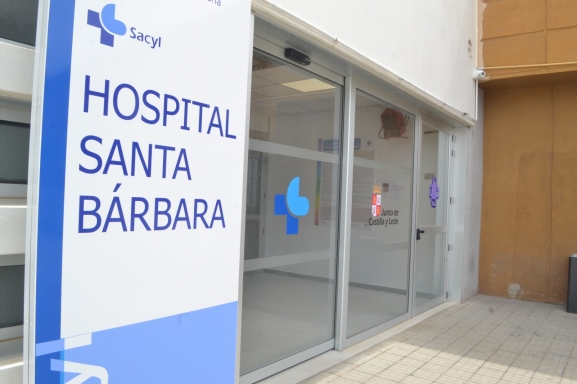Jakarta –
Sri Lanka in the world’s spotlight because of the economic crisis it is currently facing. But Sri Lanka is not the only one, there are a number of other countries that are currently in danger of going bankrupt.
Launching from AP report, the exact cause of the economic crisis facing each country may vary from one to another. But the risks from soaring costs for food and fuel are felt by all countries.
As a result, the World Bank estimates that income per capita in developing countries will be 5% below pre-pandemic levels this year.
ADVERTISEMENT
SCROLL TO RESUME CONTENT
–
Here are some countries that are at risk of bankruptcy, such as: Sri Lanka.
1. Afghanistan
Afghanistan has been reeling from a dire economic crisis since the Taliban took control of the country after the US and its NATO allies withdrew their troops last year.
Foreign aid on which to rely on practically stalled overnight and Afghanistan was hit with sanctions, such as the stalled bank transfer service that crippled the trade sector. In addition, the Biden administration also froze US$7 billion of Afghanistan’s foreign currency reserves held in the United States.
This leaves about half of the country’s 39 million people facing life-threatening levels of food insecurity and leaving most civil servants, including doctors, nurses and teachers, unpaid for months.
To make matters worse, a recent earthquake killed more than 1,000 people, adding to the misery.
2. Argentina
About four out of every 10 Argentines are forced to live in poverty because the central bank is running out of foreign exchange reserves as the currency weakens. In fact, the country is predicted to experience inflation exceeding 70% this year.
Today millions of Argentines survive largely thanks to soup kitchens and state welfare programs, many of which are channeled through politically powerful social movements linked to the ruling party.
3. Egypt
Egypt’s inflation soared nearly 15 percent in April 2022, leaving a third of its 103 million population living in poverty.
Egyptians are already suffering because their government’s ambitious reform program has made their currency float and cut subsidies for fuel, water and electricity.
Not to mention, the central bank’s policy of raising interest rates in order to curb the rate of inflation has trapped the government in difficulty in paying off the accumulated foreign debt.
4. Laos
This small landlocked country in Southeast Asia actually recorded the fastest economic growth before the COVID-19 pandemic hit.
But, since the pandemic, the debt has jumped exactly as Sri Lanka has. For three dollars, Laos is also forced to beg for debt restructuring worth billions of dollars.
The problem is even more complicated because according to the World Bank, Laos’ foreign exchange reserves are left with less than two months of imports. Its currency fell 30 percent, exacerbating the country’s woes.
5. Lebanon
Like Sri Lanka, Lebanon also suffered as its currency fell by 90 percent. Not to mention, the spike in inflation, which resulted in a food crisis and an energy crisis.
Lebanon is suffering from an economic crisis due to a long civil war, which has hampered the country’s recovery and government dysfunction, as well as terror attacks.
Worse, Lebanon failed to pay their debts worth US $ 90 billion. The debt ratio also increased to reach 170% of GDP. The World Bank says Lebanon’s economic crisis ranks as one of the worst in the world in more than 150 years.
6. Myanmar
The COVID-19 pandemic and political instability have hit Myanmar’s economy, especially after the February 2021 military coup against the elected government of Aung San Suu Kyi.
Myanmar has also been hit with sanctions from the West, such as a massive business withdrawal. Now Myanmar’s economy is estimated to have contracted minus 18 percent last year and is not expected to grow this year.
More than 700,000 people have fled or been driven from their homes due to armed conflict and political violence. This of course makes the situation in Myanmar increasingly out of control. In fact, the World Bank did not issue a projection for Myanmar in 2022-2024.
7. Pakistan
Like Sri Lanka, Pakistan has been in urgent talks with the IMF, hoping to revive a $6 billion bailout package that was put on hold after Prime Minister Imran Khan’s government was ousted in April.
Soaring crude oil prices pushed up fuel prices which in turn raised other costs, pushing inflation to over 21%. In addition, the value of Pakistan’s currency, the rupee, has fallen about 30% against the US dollar in the past year.
Currently, Pakistan is asking the IMF for assistance to disburse a US$60 billion bailout. “Pakistan’s macroeconomic risks are highly skewed to the downside,” the World Bank warned.
8. Turki
Turkey is stuck in crisis after inflation hit more than 60 percent. The Turkish lira fell to an all-time low against the euro and US dollar since last year.
The policy of cutting taxes and fuel subsidies to curb a spike in inflation taken by President Recep Tayyip Erdogan’s government failed to bring Turkey out of the crisis.
Meanwhile, Turkey’s foreign debt has already penetrated 54 percent of its country’s GDP, a level that is quite worrying considering its government debt dominates.
9. Zimbabwe
Inflation in Zimbabwe has soared to more than 130%, increasing the risk of hyperinflation in the country, as happened in 2008.
Zimbabwe is currently struggling to generate sufficient inflows of the greenback it needs for its local economy which has been largely hit by years of deindustrialization, corruption, low investment, low exports and high debt.
Ironically, inflation in Zimbabwe has made its citizens no longer trust the currency. In addition, many residents are forced to skip meals because of poverty.
(fdl / fdl)
–


